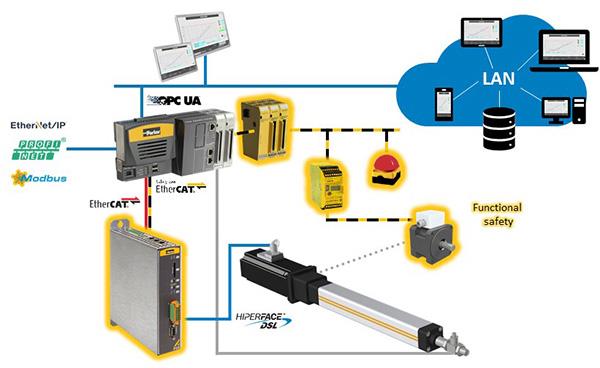The process control unit is said to be compatible with third-party device connectivity, with dual LAN networks and options for Profinet, Ethernet IP and Modbus. Numerous operating options such as web visualisation, digital I/O and communications interfaces (for example OPC UA) are also available to further simplify integration.
Ease-of-use is said to be boosted through real-time control information, historical/trend data, adjustable error response, definable motion profiles, and monitoring via tolerance windows or tolerance curves.
An advantage of the system is said to be greater energy efficiency compared to technologies such as hydraulics and pneumatics. Moreover, throughput rates are facilitated by high travel speeds of up to 450mm/s, while repeatability is 0.03mm.
Different forces and multiple stroke lengths available.
In terms of functional safety, Push-To-Fit is supplied with hardware STO as standard. Further safety functions such as SLS and others are available with the safety PLC. As a fail-safe, the safety PLC uses EtherCAT Fieldbus to establish safe communication without separate wiring.
An external safety brake completes the range and permits safety-related applications up to PLe, Parker says.

As press or joining applications are one of the key processes in modern automated manufacturing there are increased demands on product quality and statistical analysis. To fulfill such demands Push-To-Fit comes already with interfaces like Q-DAS. Within a text file, basic information and process data are available in a kind of key-value database. In addition to Q-DAS, other integrated process data management like IPM is supported as well.
Via TCP/IP process data is collected in a life cycle file to ensure access. Such systems also help you to identifies errors in an early stage.








